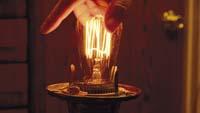Programmed obsolescence

Once upon a time... An inventor designed a bulb of eternal life, but before his commercialization, he died by mysteriously falling from the plane on which he was traveling.
Greedy manufacturers bought a patent for an indestructible fiber that was hidden in the background of the company files.
A mechanic was paid an immense fortune to renounce the design of an indestructible exhaust pipe that he could live surrounded by luxury throughout his life. Or perhaps the last time they saw run, afraid of losing their lives, with a hired killer behind, paid by the automotive bosses?
Internet is full of urban legends of this type. But are these legends true? Are there products that can last a long time but for the industry to fail before time?
In my documentary Buy, Shoot, Buy (The Light Bulb Conspiracy) I tried to find evidence and the result was an even more curious story than all conspiracy theories that can be found on the websites.
In 1924, the major bulb manufacturers met in Geneva to create an international poster. Your intention? Reduce the life of incandescent bulbs to 1,000 hours. A wave of activities began in factories and offices around the world. The company engineers developed weaker filaments, designed to last a third less than before, and sent their designs to engineers from other factories. The poster management sanctioned with fines any manufacturer that violates the rules. The principles of science and engineering were revolutionized and became contrary to the development of new models of longer life, with the aim of obtaining great benefits, regardless of cost. It was the beginning of the concept of "programmed obsolescence".
In 1938 an invention was announced worldwide as "more revolutionary than alien attacks": nylon. The patent, owned by the gigantic chemical company DuPont, asked its engineers to investigate whether the new fiber was suitable for making socks. With the launch of the new permanent socks, they had a great success: they were in line of women and men to buy them, and several girls, who for their concern to be the first to show themselves, were dressed out of the shop on the floor of the sidewalk.
Faced with the durability of the new nylon socks in front of the silk socks, the DuPont managers were worried. Sales were going to decline by buying a couple of women. The managers held a meeting and ordered the engineers to change the formula to make the thread weaker and faster.
By the 1950s, the programmed obsolescence was very widespread in many industries. Many engineers and designers were asked to use their knowledge to design products with a "death date" or a "death day." For example, they designed a transistor, limited to three years of useful life, when the radio was still a long-term investment. Car manufacturers decreased the quality of tires and finger caps for consumers to come more often to the repair shop. The U.S. Consumer Association. documented this fact and even complained in vain. In 1951, a U.S. judge banned limiting bulbs to a useful life of 1,000 hours, but manufacturers rejected this resolution.
On the other hand, access to the computer market has meant new opportunities for programmed obsolescence. Many ink printers incorporate a chip counter that gives error or burns after printing a certain number of sheets. The technical manual of HP printers clearly indicates that the life of the printer is 18,000 pages or 5 years, which happens before.
Many ink cartridges also have a chip counter that informs consumers that the ink has run out (or blocks the printer until the cartridge has been changed), but the truth is that the cartridge continues to have ink, up to 30% of its capacity. Recently, the Spanish Police detained several employees of a company for inventing a new variant of programmed obsolescence: they installed two chip counters on the printers. If the consumer bought a warranty extension for the machine, they programmed the chip for a longer service life.
When I continued looking for specific cases for my documentary, the list was extended. The phenomenon of programmed obsolescence seemed very fruitful and widespread, although at first I consider it to be the behavior of a few greedy companies. The documentary went from a history of few urban legends to a complete analysis of the modern consumer society. This society depends on the demand of the growth economy and the so-called " frequent repeat purchase " ("frequent and repeated purchase") industry, influenced and supported by designers, engineers and technicians, who voluntarily put themselves to their service.
As a result of this action, the useful life of our planet's natural resources is decreasing, as our industries turn them into consumer products that come more and more rapidly to landfills. In the Third World, the cemeteries of electronic waste grow. There, the waste causes sustainable damage to the environment, since it is not recycled and reincorporated into the productive cycle. The result is a continuous destruction of resources.
How have we reached this point, taking into account that science, engineering and design emerged from the vocation to explore, understand and improve the world? When did companies stop competing on the basis of nature and sustainability and adhered to frequent sales and rapid profits?
Many consumers and manufacturers have started to raise this question and a new generation of designers and entrepreneurs is rediscovering traditional knowledge and values. In their projects, science, engineering and design have joined forces with a common goal: sustainability and progress. If we do not renounce the planned obsolescence and the waste it generates, our consumer society risks being obsolete.
By the way, the first anecdote on the Internet about the fall of the plane is true. German inventor Dieter Binninger died shortly before starting to produce bulbs in mass of 100,000 hours of useful life. His patent still exists, but since his death no one has wanted to risk. Meanwhile, a bulb manufactured in 1901, 23 years before the creation of the bulb poster, is still lit in the basement of California firefighters, and although it is ironic, it has already lasted longer than the two webcams.
Documentary: www.zapore.es - Buy, shoot, buy.
More information at www.facebook.com/Euskaltel.com TirarComprar
Website of the 1901 bulb: http://www.centennialbulb.org/






